No matter how old (or young) you are, the right workout for your body can do wonders for your health.
Exercising according to your age and physical condition not only keeps your body fit but also keeps your mind active and sharp.
Have you ever asked yourself the question, what is the best exercise for a senior?
The answer to this question is relatively simple – the one that you enjoy doing! Because if you do not enjoy doing a particular exercise, you are not likely going to do it for any length of time.
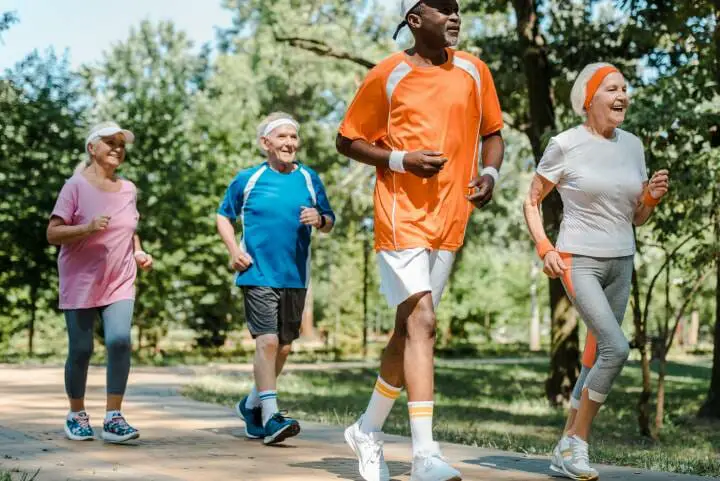
Having said that, with age, our physical condition changes. The kind or the intensity of exercise that we enjoyed doing a few years ago might not be possible for our bodies any longer.
In this article, we look at some of the most suitable exercises for the elderly.
For our purpose, we look at both, aerobic and strength exercises for the elderly.
Contents
Aerobic Exercises for Seniors
Aerobic exercises focus on building a person’s stamina by working on the cardiovascular system. Most aerobic exercises like running and swimming require you to engage in a moderate-intensity routine, for a relatively long period of time.
But there are misconceptions when it comes to aerobic exercises for seniors. Especially for older seniors.
Many elderly avoid aerobic exercises such as brisk walking, cycling, jogging, or dance thinking that these activities were more suitable in their youth. Nothing can be farther from the truth!
Depending on your health and physical condition, aerobic exercises can be your best friend.
If you can not run, jog. If you can not jog, go out for a brisk walk. And if brisk walking is also beyond you, a stroll in the park can also go a long way in keeping you healthy.
The World Health Organization recommends at least 150 minutes of moderate physical activity or 75 minutes of intense aerobic activity every week for those who are 65 years and older.
If you break it down, it works out to a 20-minute moderately brisk walk every day. If you can do it, there is no reason you should not.
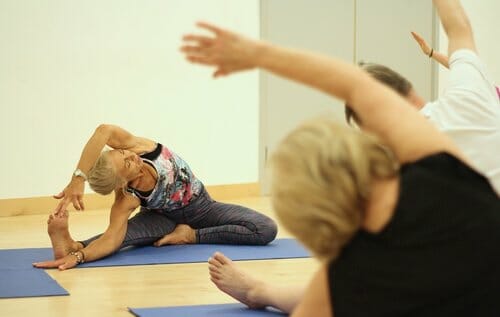
You may also like to read 5 Best Posture Exercises for Seniors
Benefits of Aerobic Exercises in Seniors
Aerobic exercises have many benefits for people of all ages. But they can be especially beneficial to the elderly.
Let us look at how aerobic exercises are good for seniors.
Keep Your Weight in Check
Regular moderate to intense physical activity has been linked to weight control through numerous scientific studies.
Combined with a healthy diet, aerobic exercises are a great way to keep your weight in check.
A New England Journal of Medicine study evaluated obese older adults with sedentary lifestyles. It was found that combining aerobic exercises with diet control was an extremely effective way of weight control for older adults.
Manage Chronic Conditions
It is a fact that regular exercise can help you manage chronic disease symptoms. According to the Mayo Clinic, aerobic exercises can help you improve your heart health and endurance.
Aerobic exercises help to exercise the heart and increase blood flow throughout the body. Improvement in heart health will be noticeable with tests, evaluation from your doctor, and the ability to tolerate activities for a long period of time without shortness of breath, or extensive fatigue.
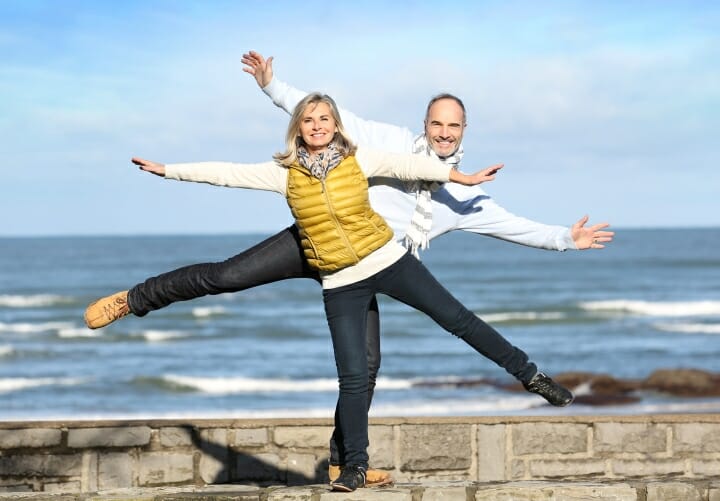
Aside from heart health and endurance, exercise can also help with the regulation of insulin hormone. After making daily exercise a part of their medical management program, type 2 diabetics reported improvement in overall insulin release and sensitivity.
This was perhaps a result of the alteration of enzymes and proteins in skeletal muscle associated with the signaling of insulin and also the metabolism of glucose.
Chronic conditions like Alzheimer’s disease also benefit from aerobic exercises. As assessed in one study, using treadmill walking exercises improved quality of life, inflammation occurring on the brain as a result of the disease, and psychological well-being (anxiety, depression, and mood state).
You may also like to read How Much Exercise Does One Really Need?
Lowers Bad Cholesterol
Along with the improvement in heart health, aerobic exercises help with increasing good cholesterol (HDL) and reducing reduce bad cholesterol (LDL).
Leon and Sanchez conducted a study of 51 interventions involving 12 weeks or more of aerobic exercise. The studies saw a 4.6% increase in HDL cholesterol and a 5% fall in LDL cholesterol.
By lowering bad cholesterol, it can also help reduce triglycerides, which are a form of circulating fat that can accumulate from our diet or poor lifestyle choices.
This can help prevent clotting from fat accumulation or plaques in vessels, improve blood circulation particularly in the arteries, and weight management.
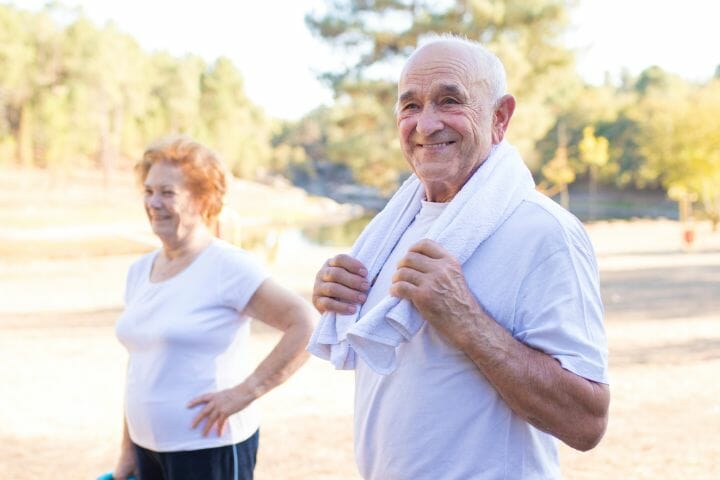
Improves Mood
When we exercise, our bodies release hormones and chemicals like endorphins that are important for sustaining the energy needed for that specific activity.
Endorphins interact with the brain receptors in your brain, helping to reduce pain perception. This can also improve your spirits, helping you to feel fulfilled after your exercise.
Altogether, endorphins can help you cope with stress, deal with chronic pain, and boost esteem. This can be vital for seniors who are dealing with anxiety and depression.
Moderate aerobic exercise may help attenuate negative emotions for seniors experiencing emotional regulatory difficulties.
Helps You Stay Active and Independent
As we get older, some of us may have a tendency to neglect physical activity more often. Having a sedentary lifestyle can increase the risk for the development of heart disease and diabetes.
Maintaining a routine of doing exercises daily or every other day is essential to staying active. It can also help to improve independence from your family members.
Additionally, getting in the habit of exercising regularly can help to keep the mind attentive to the tasks and routine of every day.
Doing physical activity on a daily basis can help to protect reasoning, memory, thinking skills, and judgment in adults. This is a reason why exercise has been shown to be effective for patients with Alzheimer’s, as well as for healthy adults to reduce the risk of dementia or memory loss.
You may also like to read 11 Best Exercises To Improve Your Balance
Types of Aerobic Exercises for Seniors
Walking
Walking or brisk walking is one of the simplest aerobic exercises that can be done daily.
Walking around the neighborhood in the morning will keep you active. This can be an even easier habit to maintain if you have a dog to walk with.
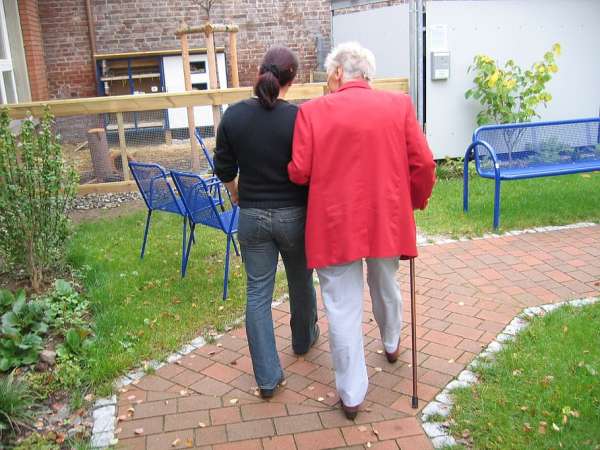
Brisk walking can also be done if you have a treadmill at home. If you have a treadmill with a screen, you can exercise while watching videos on the internet.
If you are starting out with exercising, a walk around the block is a great first step. It is good to have goals and work towards them.
Many fitness enthusiasts like to complete 10,000 steps in a day. It is a nice round number. If you are a beginner, start off with doing 1,000 steps in a day.
Build it up to two thousand in a couple of weeks. Then go up to four six and eight thousand till you are comfortable knocking off ten thousand daily steps. Many mobile phones these days come with step counter apps or you can use a dedicated pedometer to track your progress.
Walking can help to increase your physical activity and loosen your stiff joints. But walking is not recommended to be your only activity if your goal is to lose weight. You may want to combine it with some strength exercises and sensible eating to keep those pounds off!
Before going for your brisk walk, just make sure you have water with you so that you can keep hydrated and take regular rest when you feel like you’ve worn yourself out.
You may also like to read 10 Safe Exercises After Shoulder Surgery
Jogging or Running
Another form of aerobic exercise is jogging or running. The only difference between these and walking is that faster movement utilizes more energy and can be a good way to lose weight.
Jogging or running can be done outside, at a senior’s jogging club, or at home on a treadmill or you can try these Jogging Strollers if you have grandkids.
Jogging and running involve faster pacing, as well as practicing to pace yourself so that you can maintain your energy level throughout your exercise.
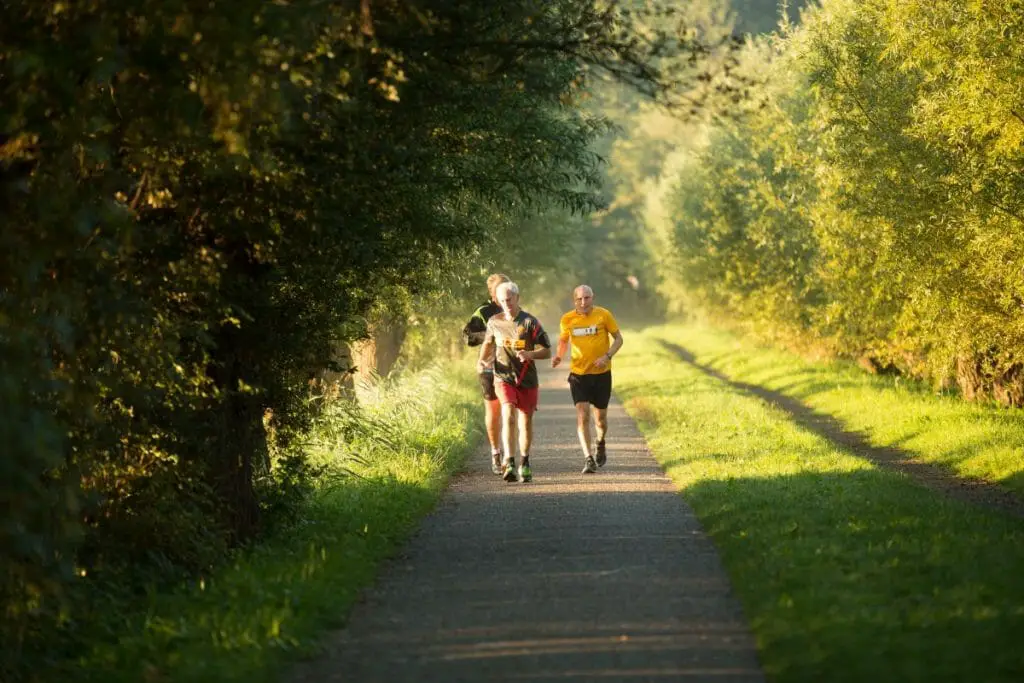
For as long as you listen to your body, you’ll be able to finish your exercise strong. Note that if you experience any vomiting, nausea, dizziness, or extreme fatigue, take a rest and reassess your energy expenditure.
Also, jogging and running is more taxing on the joints than walking. So you might want to make sure that you are wearing the right shoes for running.
Alternately, you can look at some lower impact exercises like cycling and swimming if you have trouble with your joints.
Cycling
It takes balance and awareness of surroundings to do cycling as an elderly. However, if you cycled in your younger years, your senior years are a great opportunity to get back on the bike!
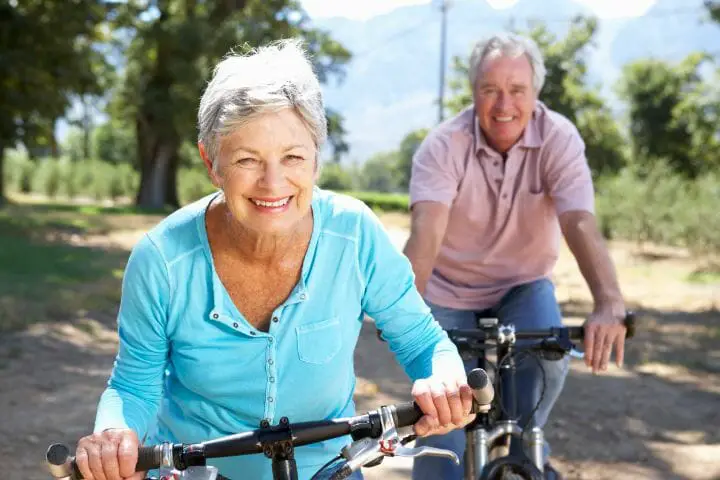
For those who have balance problems, using training wheels can be a great option. Regular cycling can help you lose weight and stay active.
It is also a good form of transportation, and you would be contributing to reducing greenhouse gas emissions. If you build cycling into your daily routine like taking it while doing grocery shopping or for your daily coffee meetup, you don’t even have to find extra time in the day to work out.
Cycling can also be done at home with rehabilitation bikes. These are used by physical therapists to help clients improve the endurance of their lower extremities.
Other varieties of bikes are also available, such as the ergometer bike. These can be adjusted to suit to load you are able to handle.
You may also like to read Isometric Exercises for Osteoporosis
Gardening
The CDC qualifies gardening as an aerobic exercise. The following gardening activities can serve as moderate aerobic exercises:
For those with green thumbs, light gardening like simple planting and potting burns between 150 and 250 calories per hour.
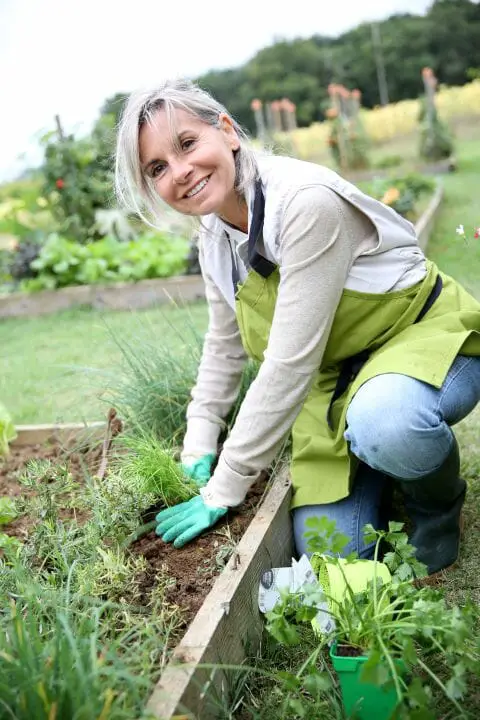
Heavier gardening tasks like digging, hoeing, weeding, trimming, pushing the lawnmower and raking can make you lose up to 420 calories per hour, depending on the intensity level you can use these gardening tool for your convenience.
That compares well to a very decent round of jog around the neighborhood. And you get a beautiful-looking garden or yard as a bonus!
Gardening may seem like a departure from your usual exercise routine. But depending on the gardening activities done and the time spent doing them, it qualifies to benefit older adults as a good form of physical activity and it is also therapeutic in nature.
Dancing
Dancing is a form of aerobic exercise that fits well with seniors who are looking to join a group and have fun while exercising. It can help you to build confidence in your self-image as well.
No matter what type of dance class you attend, if it keeps you moving and grooving for half an hour, then it’s a great exercise that can help increase your energy.
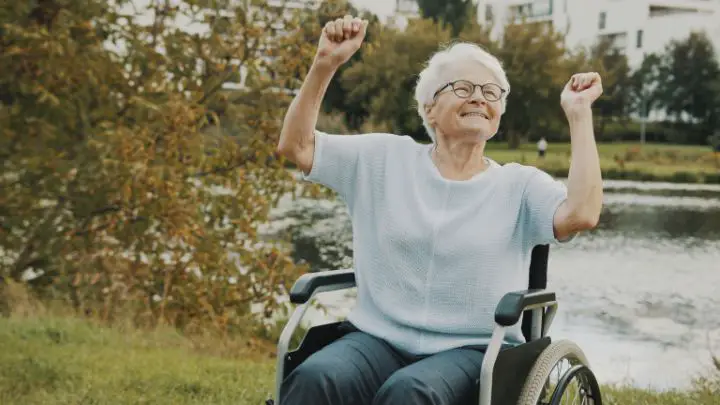
There is a growing trend of dance classes that teach all sorts of dance types ranging from salsa, rumba, and the highly popular zumba.
This latter form of dance is an exercise created by Colombian dancer Alberto “Beto” Perez in the 90s. It is an alternating fast and slow rhythm routine with dance moves that match Latin and international music. Zumba is a great dance form for seniors who are looking for a low-impact workout.
Like gardening, dancing gives one a sense of accomplishment or fulfillment. I am not sure if many people can say the same for pounding away on 6 feet by 3 feet conveyor belt (a.k.a. treadmill).
Water Aerobics
There is a lot of variety to choose from when you want to do aerobics. With that said, have you heard about water aerobics? It is a type of aerobic exercise that is done while submerged in a body of water, mostly a swimming pool.
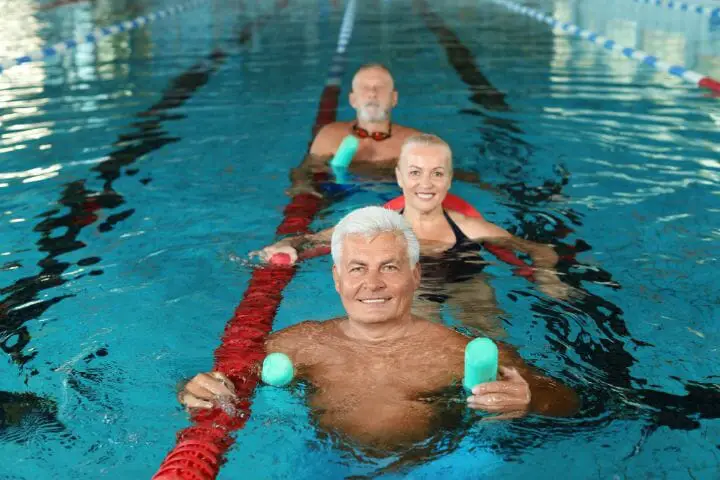
Water aerobics is beneficial for older adults with problems with their joints, including arthritis. Exercising in the water can help offload the joints and promote mobility in these areas.
Water aerobics classes are mostly conducted in a swimming complex with a group of people doing similar movements you might find in a gym fitness class. Thus it can also be a way for you to socialize and meet like-minded and similar aged people.
Using floaters, lightweight foam dumbbells, and weights on the ankles help to increase the challenge of the water exercises. Some water aerobics can also involve cycling on a stationary bike in the water!
You may also like to read Best Theraputty- Exercise Putty for Hand Strength
Yoga and Stretching
While not your typical aerobic exercise, Yoga and stretching can be really beneficial for seniors.
As we age, stiffness of joints and slouching are common problems. Both Yoga and regular stretching keep your joints supple and help you improve your posture.
Another common issue that many seniors face is slip and fall accidents. Some Yoga postures like Tadasana (mountain pose), Vrikshasana (tree pose) help you improve your balance as well.
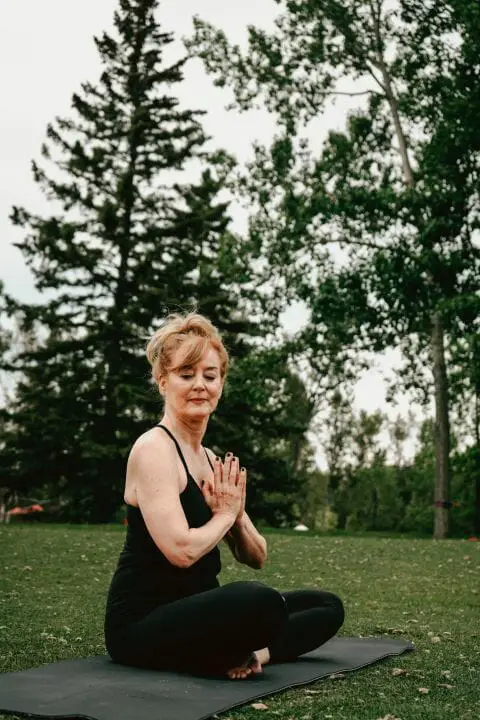
Yoga and stretches are good to limber up and cool down your body before and after an aerobic workout.
A common misconception about Yoga is that it is just a physical exercise. When practiced properly with the correct focus on poses and breathing techniques, Yoga can have immense mental health benefits.
A study of women practicing Yoga over two months, two times a week for 90 minutes each time showed significantly reduced levels of anxiety.
If you are starting out with Yoga and stretching, start slow. Do the poses and stretches that are easy on your body.
Speak to a physical trainer or a Yoga instructor to understand what Yoga poses and stretches are good for you. Also, always have a word with your medical practitioner before starting a new fitness routine.
Precautions Seniors Should Take While Doing Aerobic Exercises
Doing aerobic exercises can be easier relative to strength exercises, especially if the activity requires a smaller amount of physical strength and is done at a more leisurely pace.
However, it is important to ask your healthcare provider whether the activity you’ve chosen is appropriate for your physical condition.
It is also important to do these exercises 2 hours after a meal, and this applies especially if you are someone with heart issues, high blood sugar, or other ailments. Taking this precaution can help prevent occurrences like dizziness, nausea, and extreme fatigue.
Strength Exercises for Seniors
As we age, our muscles start to weaken or atrophy. To keep muscle loss at bay, it is important for seniors to combine strength exercises with an aerobic workout. This will help seniors avoid postural problems, frailness, and inability to do other day-to-day activities.
A common problem that many elderly women face is that with age, they can almost feel their body mass sliding down and they become bottom-heavy with every passing year. Strength exercises, especially those that focus on your core and upper body are a great antidote to this.
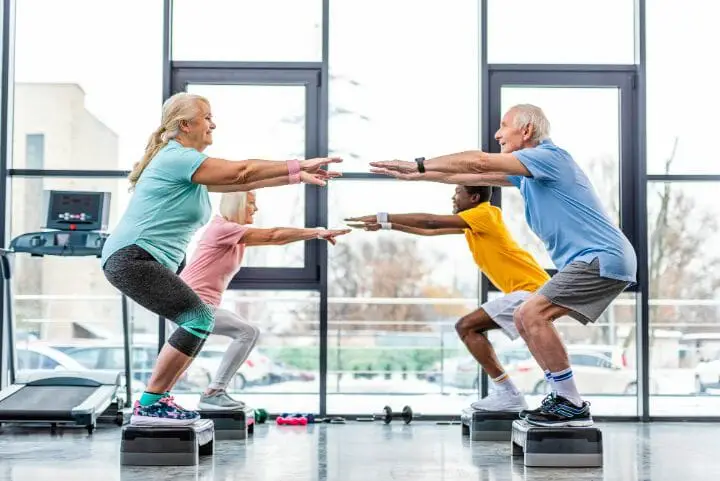
Strength training is a form of physical exercise that involves the use of weights or bodyweight to improve strength and endurance.
It can also be used for weight loss and can also help with improving balance and coordination.
A 2017 study showed that seniors who did strength training exercises, especially those who were physically frail, showed an increase of 6.6–37% in maximal strength, 3.4–7.5% in muscle mass, 8.2% in muscle power, 4.7–58.1% in functional capacity.
These results were seen after working out at least 1 to 6 times per week, with an average of 3 times per week.
So what are the benefits of strength training in seniors?
You may also like to read Can Chiropractic Help Restless Leg Syndrome
Benefits of Strength Training for Seniors
Reduces The Effects of Osteoporosis
Lifting weights benefits seniors when it comes to increasing muscle strength and bone density. As we age, there tends to be a reduction in bone nutrition and the production of hormones.
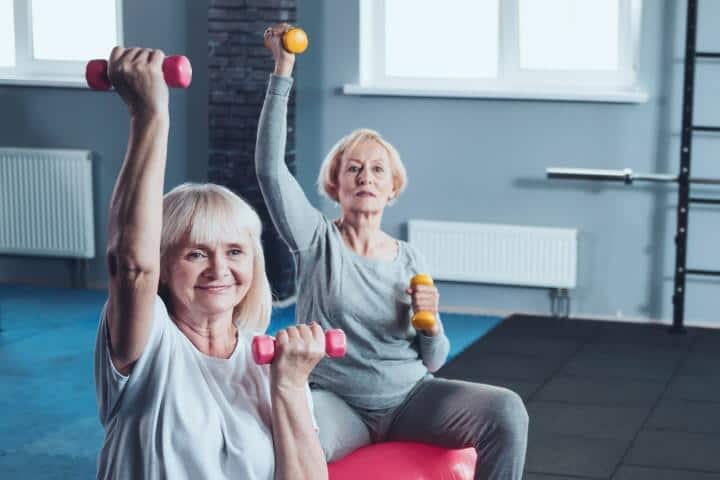
This is especially with women in their 40s to 50s. Physical weakness and frailty can be attributed to this form of age-related muscle loss.
Postmenopausal women diagnosed with osteoporosis can benefit greatly from strength training. A 2013 study has shown that doing a 12-week maximal strength training (MST) program can be beneficial for postmenopausal women with osteoporosis or osteopenia.
This follows a principle called “Wolff’s Law”, wherein bones adapt according to the demands placed on them. It is frequently used in physical therapy and can be attributed to how strength exercises can benefit seniors with osteoporosis.
Increase Muscle Mass
One of the striking effects of aging is the loss of muscle mass, strength, and function. This is called sarcopenia. Some studies have shown that after the age of 30, we could lose 3-5% of muscle mass per decade. This rate of decline is even higher after the age of 60.
According to a 2011 study, strength training among the elderly not only increases their muscle strength but their muscle mass as well.
It also corresponds with the typical guidelines set out about strengthening healthy young adults. It is recommended to train at least 3-4 times a week for the best results.

Helps You Lose Weight
A study from Wake Forest University suggests that combining weight training with a low-calorie diet promotes lean muscle mass.
Lean muscle mass means less fat in areas of the body that are easily seen: stomach, sidearms, hips, and thighs. The leaner your muscles become, the less room there is for fat storage.
Losing fat via strength training can lead to benefits not only in the elderly but also in young healthy individuals after 4-6 weeks of training with a frequency of 2-3 times a week.
It is advised for seniors to start with bodyweight exercises so that they can gain control of their own body movements.
Promotes Balance
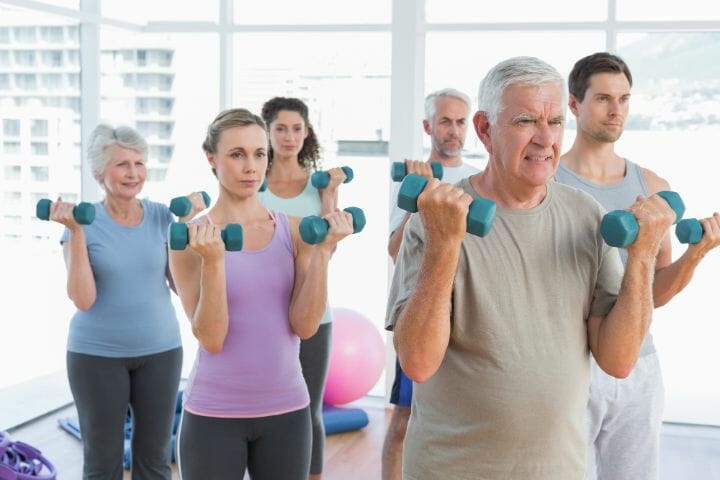
Strength exercises have positive effects on bone health. Lower limb strength is necessary for seniors to be able to walk and hold the same position for long periods of time.
If seniors experience issues in the hips, knees, and ankles and especially in the bones from arthritis, it can pose problems with balance, and this can lead to falling.
Numerous studies from the Journal of Physical Therapy Science showed long-term effects of training the lower limbs among the elderly. The studies concluded that an improvement in lower limb strength among the elderly may lead to a balance enhancement for those who are neurologically healthy.
Altogether, strength training can lead to fewer falling incidents and improved balance.
You may also like to read Busting 12 Physical Therapy Myths To Help You Get Better Quickly and Safely!
Risks of Strength Exercises for Seniors
- If you have recently had heart surgery (specifically coronary artery bypass graft), it is not recommended to do any strength exercises for at least 3 months post-surgery. However, if it is permitted by your health practitioner, low impact strength training may be performed if your body is able to support lighter dumbbells or bodyweight training.
- If you have a musculoskeletal condition, like shoulder pain, neck pain, or pain in the knees from straining or tear, consult your doctor first to determine whether resistance training is right for you. Some physical therapists do give their patients loading exercises to restore weakened muscles that resulted from injury, but it is important to consult with your doctor for advice about your specific case.
- Practice breathing exercises before doing strength training. Holding your breath during training could simulate a bodily response that can increase pressure on your thorax and abdomen and lead to high blood pressure. It is often recommended to breathe out during each strength exercise repetition.
- Always make sure you have supervision during strength exercises. In particular, a trainer or a physical therapist can assist you with your needs. They can provide modifications to your training that best fit your fitness level.
You may also like to read Best Exercise Equipment for Seniors
Types of Strength Exercises for Seniors
Seated Pelvic Tilt
The seated pelvic tilt exercise is a modification of the lying-down version. It helps to activate the core and glutes.
It helps to ease standing up and back pain and can also allow for more control of more vigorous exercises that involve the abdomen and back.
To do this exercise, sit up straight in a sturdy chair and hold your abdominals. Take a deep breath in, and then squeeze your abdominals while exhaling.
Proper breathing will help you do the exercise correctly, without causing pressure on your chest and abdomen. Hold for about 5 seconds, and then relax. Do a total of 10 repetitions.
Tricep and Bicep Curls
These are specific exercises that target the muscle strength in the arms and shoulders.
Working out those specific muscle groups with weights or with your body weight can strengthen both the biceps and triceps.
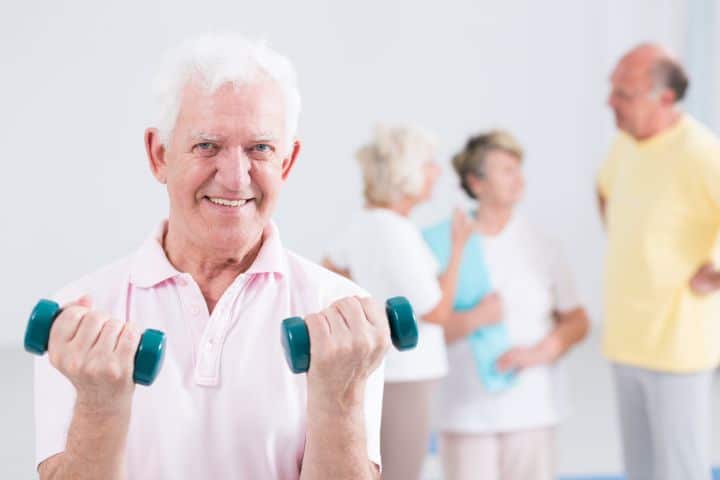
Strengthening these muscles can help with daily activities such as reaching for items on higher shelves or transferring objects from one shelf to another. It can also make it easier to do daily hygienic routines and put on clothing.
To do bicep curls, place your hands on each side of your hips. You can use a small dumbbell, wrist weights, or any kind of household object that can serve as a weight.
With your elbows rested on each side, slowly lift your forearms up to your shoulders, making sure your elbows are bent. Hold that position at least for a second while squeezing your muscle and then reverse the curl slowly. Repeat 10 times.
To do triceps curls, raise your arms straight up to your ears. Keep this position and slowly fold your elbows backward until you reach your upper back. You can use a dumbbell, wrist weights, or a ball to add some weight.
Do this exercise slowly, and keep your arms straight and near your head. Do this around 10 times.
Chair Squat
As mentioned above, studies have shown that strengthening the lower limbs improves balance and bone health.
Squats not only improve strength in the lower limbs but also the glutes. Stronger glutes help with better posture and can ease back pain.
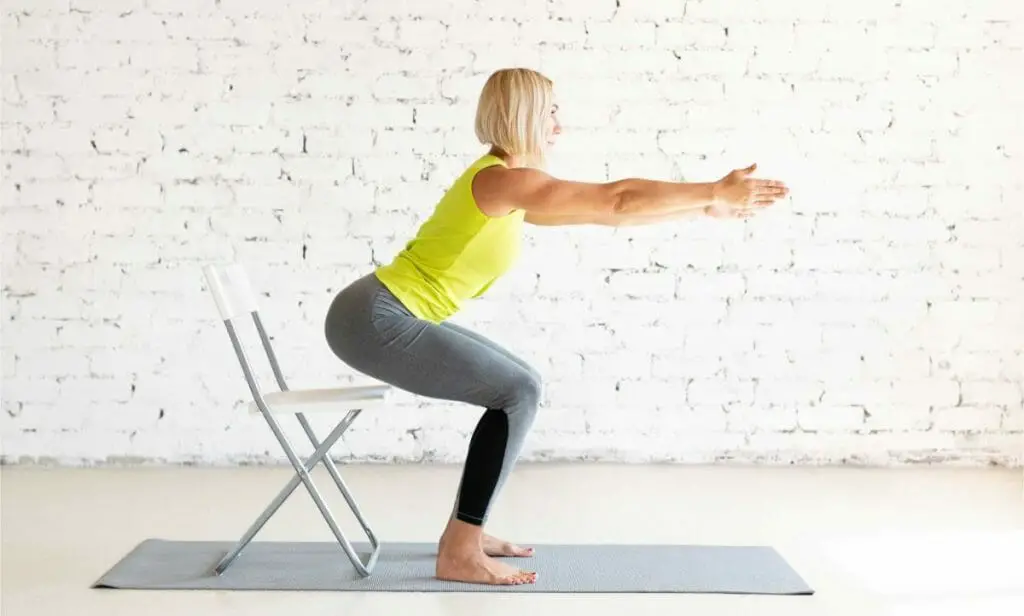
To do this exercise, stand straight in front of a sturdy chair that you can use for balance and guidance. Your feet should be shoulder-width apart with your toes pointing straight ahead.
Begin to bend your knees until you feel the weight of your upper body on your ankles or cannot see your toes. Make sure to keep your head and chest raised.
Gently tap the chair with your buttocks, stay in this position for about 10 seconds, and then slowly stand up.
Knee Lifts
Knee lifts are another lower limb strengthening exercise that can strengthen your quads and help improve balance.
You can start out by climbing stairs or it can also be done sitting, standing or even lying down.
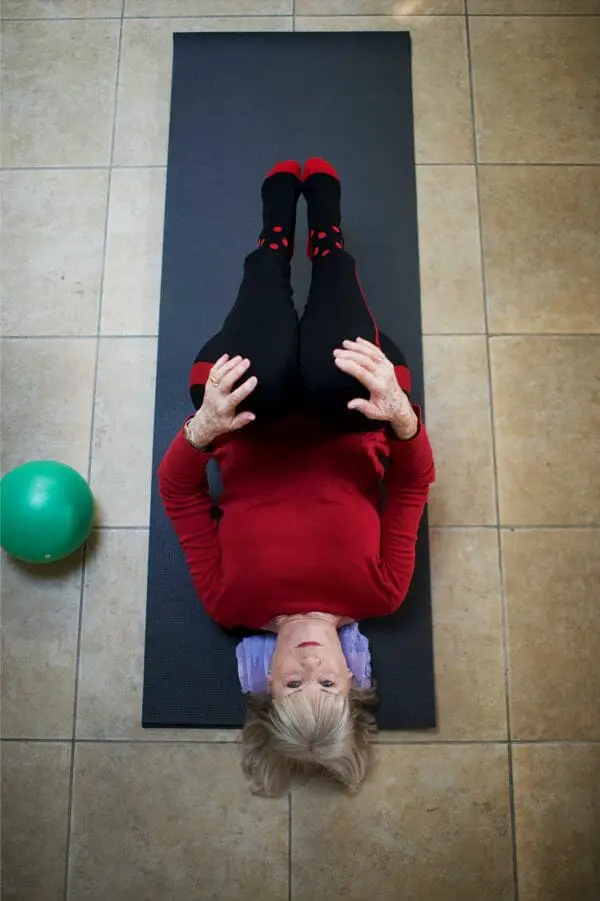
If standing without support for balance is difficult for you, use a piece of furniture like a chair or sofa for support.
To do this exercise while standing up, lift one of your knees to hip level, and then alternate knees. Aim for 10 knee lifts for each knee.
If you want more of a challenge in your exercise, use a ball to meet one raised knee and raise your arms overhead, and then lower the ball to meet the other knee.
You may also like to read The 7 Best Massage Guns For Sciatica
Final Thoughts about Aerobic and Strength Exercises for Seniors
As our bodies age, we tend to lose muscle strength, our bones become frailer, and we are more prone to injuries, These changes are all a natural part of aging.
However, this does not mean we cannot at least maintain our strength and physical capabilities. It may require more effort, but it is certainly doable with some persistence and the right exercises!
In the article, we discussed the process of staying fit as an older adult. We listed a variety of aerobic and strength exercises that help you to maintain your heart health, endurance, and strength in tip-top shape.
Two takeaway pieces of advice are as follows:
Firstly, ensure that you are exercising within your physical limits and have consulted your health professional to check that your chosen physical activity is safe for your physical condition.
Secondly, make sure whichever activity you choose to do is always fun for you! Physical activity or exercise that is enjoyable to you will help to ensure that you keep it up!
